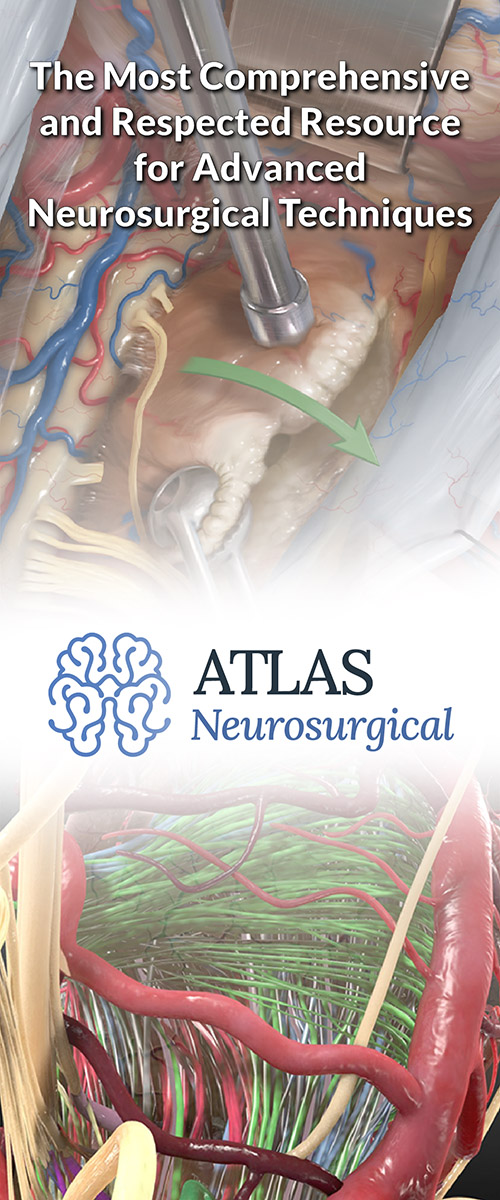Living With Acoustic Neuroma
- How Common Is Acoustic Neuroma?
- Early Symptoms
- What Happens if Acoustic Neuroma Remains Untreated?
- Diagnosis
- Treatment and Management of Acoustic Neuroma
- Potential Complications After Acoustic Neuroma Surgery
- Life Expectancy After Treatment for Acoustic Neuroma
- Treating Long-Term Effects of Acoustic Neuroma
- Key Takeaways
An acoustic neuroma, also known as a vestibular schwannoma, is usually a single, slow-growing, benign tumor that forms on the eighth cranial nerve. This nerve is also called the vestibulocochlear nerve, which is responsible for sending information about hearing and balance between the inner ear and the brain.
If you have been diagnosed with an acoustic neuroma, you may be experiencing a variety of symptoms. These typically include hearing loss, balance problems, and headache.
How Common Is Acoustic Neuroma?
Acoustic neuroma is very rare, occurring in approximately one person out of 100,000 per year according to the National Institutes of Health. There are even rarer instances when the condition is inherited. Individuals that have inherited the tendency to develop acoustic neuroma have a faulty gene that causes neurofibromatosis type 2 (NF2). Schwannomas or acoustic neuromas associated with NF2 usually occur in both ears. They have the potential of becoming malignant and more aggressive and tend to be more challenging to treat. However, they only account for about 5% of all acoustic neuroma cases.
Early Symptoms
When a small acoustic neuroma first begins to grow and place pressure on surrounding areas, you may start to notice gradual hearing loss. You may also experience tinnitus described as ringing in the ear. As the tumor gets bigger, balance problems begin to occur.
If the tumor becomes large enough to press against the brainstem, other cranial nerves may become affected. As a result, you may start experiencing facial numbness and tingling or facial weakness.
Why should you have your surgery with Dr. Cohen?
Dr. Cohen
- 7,000+ specialized surgeries performed by your chosen surgeon
- More personalized care
- Extensive experience = higher success rate and quicker recovery times
Major Health Centers
- No control over choosing the surgeon caring for you
- One-size-fits-all care
- Less specialization
For more reasons, please click here.
What Happens if Acoustic Neuroma Remains Untreated?
If the acoustic neuroma is not treated, the patient may develop worsened symptoms as the tumor grows larger. These symptoms potentially include complete hearing loss, total facial paralysis, and severe balance problems.
In rare cases, the growing tumor may cause a dangerous situation where the cerebellum and the brainstem become compressed. In addition, a condition known as hydrocephalus may occur due to the buildup of cerebrospinal fluid, increasing pressure on the brain. This can be life-threatening. However, these situations are extremely rare, especially if the acoustic neuroma is properly managed at an early stage. In short, benign acoustic neuromas are rarely fatal when diagnosed and treated early.
Diagnosis
You will need a formal diagnosis from a neurosurgeon or otologist to get treated for an acoustic neuroma. If you start with your primary care physician, they will probably refer you to a neurosurgeon or otologist who will order diagnostic tests. Knowing about these diagnostic tests ahead can prepare you for what to expect and to reduce your anxiety.
Hearing Tests
- an audiogram or hearing test
- an otoacoustic emissions test, which checks to see if there are unusual vibrations in the cochlea as a result of damage
- an auditory brainstem response test, which shows how well the sound signal travels from the inner ear to the brainstem and if there are any problems in sound transmission
- a vestibular response test, which is designed to show whether the balance part of the eighth cranial nerve is working properly.
Your doctor will explain which hearing tests he or she thinks are necessary.
Imaging
Options for obtaining images of an acoustic neuroma include a CT (computerized tomography) scan and an MRI (magnetic resonance imaging) scan. The MRI is the preferred imaging modality. It uses magnetic fields to create computerized, three-dimensional pictures of the head. It shows tumors, the brain, and nerves very well. Your doctor may inject a contrast dye into a vein before the scan so that the tumor will stand out brightly in contrast to normal tissues.
If you have a pacemaker or certain metals in your body, you may not be able to undergo an MRI. Your doctor will order a CT instead — a series of X-ray images which are sent to a computer — to get the three-dimensional pictures of a cross-section of your head. Your doctor may also inject a contrast dye before a CT scan to enhance the tumor.
Treatment and Management of Acoustic Neuroma
Observation
If your tumor is small, slow-growing, and benign when it is diagnosed, it probably will not place much pressure on the brain and surrounding structures. In that case, you may only have mild symptoms, or you may not have symptoms for several years. You would then be a candidate for receiving the "watch-and-wait" approach or observation as your primary tumor management plan.
For instance, your doctor may ask you to come in six months after the first MRI. Sometimes you may have to come in every six to 12 months with repeat MRIs. Over time, your visits may be spaced out with increasingly longer periods between appointments if the tumor has not grown and remains asymptomatic.
Surgery
A team of specialists perform one of three types of craniotomies to remove an acoustic neuroma. Two of the procedures involve a cut behind the ear and one involves an incision above the ear. In some cases, hearing may be preserved, but in the surgery referred to as the translabrynthine approach, any hearing the patient may have before the operation is lost. In addition, other complications or changes with surgery may occur:
- Temporary or permanent facial weakness on the side of the head with the affected ear.
- Temporary or permanent imbalance: lf the procedure involves removing damaged nerve tissue responsible for balance, your balance may gradually improve over the months or years after the operation.
- Headaches
Radiation
Radiation may be used to treat small acoustic neuromas. Radiation therapy alone, however, will not shrink the tumor but may stop its growth. There are traditional radiation methods as well as cutting edge, non-invasive radiosurgery treatments, frequently performed with a system called the GammaKnife®.
Chemotherapy
Chemotherapy is seldom used for benign acoustic neuromas. It is not standard treatment for this condition. However, there are various chemotherapy drugs available which doctors may use to treat a malignant acoustic neuroma in situations where more traditional treatments have failed to stop tumor growth.
Two of the most common drugs of this type are bevacizunmab and erlotinib. Off-label use of bevacizunmab to treat acoustic neuromas has been found to stabilize the size of the tumor and improve hearing over time. These medications may be used when no other option exists.
Potential Complications After Acoustic Neuroma Surgery
Living with an acoustic neuroma after treatment requires ongoing management. Some of your symptoms may be alleviated after surgery or radiation therapy because the tumor will no longer be putting the same pressure on surrounding tissues. However, you may still experience symptoms and have to adjust to a new normal.
Remaining symptoms may include hearing loss, balance problems, and partial or full facial paralysis. In addition, if the acoustic neuroma had caused hydrocephalus due to the buildup of cerebrospinal fluid, another surgical procedure called ventriculoperitoneal shunt placement may be required.
Life Expectancy After Treatment for Acoustic Neuroma
Acoustic neuromas or vestibular schwannomas are rarely life threatening. When treated effectively, patients are expected to have a relatively normal life span. If the doctor decides to manage the tumor through observation instead of using direct treatment such as surgery, or radiation therapy, some patients remain in the observation phase for several years or decades.
When the tumor is finally treated directly, the prognosis is very good and most people continue to live out their lives, engaging in typical activities such as driving and working.
Treating Long-Term Effects of Acoustic Neuroma
The following effective methods have been developed to help patients deal with their hearing loss throughout their lives after treatment:
Cochlear Implants for Hearing Loss
In cases where the patient's treatment of the acoustic neuroma has left the cochlear nerve intact, surgeons may be able to insert cochlear implants. Some surgeons specialize in inserting the implants during the same operation in which the entire tumor or part of the tumor is being removed. Cochlear implants may help preserve or restore hearing after treatment and new developments for effective implants are ongoing.
Facial Reanimation Surgery for Loss of Facial Expression
In situations where the tumor and/or its treatment has left the patient with facial paralysis, facial reanimation surgery may be needed. This type of surgery is recommended for acoustic neuroma patients who have lost all or almost all their ability to show facial expression. It Is usually done in a delayed fashion following tumor removal surgery.
Vestibular Rehabilitation Therapy for Balance Problems
Finally, this is a special type of physical therapy that retrains the acoustic neuroma patient's body to regain some balance he or she has lost. Vestibular rehabilitation therapy helps reduce some of the balance problems that remain and, in many cases, helps the patient feel steadier on their feet.
Key Takeaways
Acoustic neuromas are very rare. When diagnosed and treated early, the patient may avoid potentially life-threatening symptoms. As a result, the condition is almost never fatal. Long-term observation/monitoring as well as direct treatment (surgery and/or radiation) are management options. Direct treatments are effective in slowing down tumor growth, reducing tumor size, and alleviating symptoms.
That being said, patients with acoustic neuroma must manage symptoms that remain after treatment, such as hearing loss, loss of face movement, and balance problems. Fortunately, highly effective therapies exist to address these potential problems. In short, most acoustic neuroma patients who proactively manage their ongoing symptoms under the care of a qualified doctor have the potential to work, drive, and resume their lives for many years to come.




